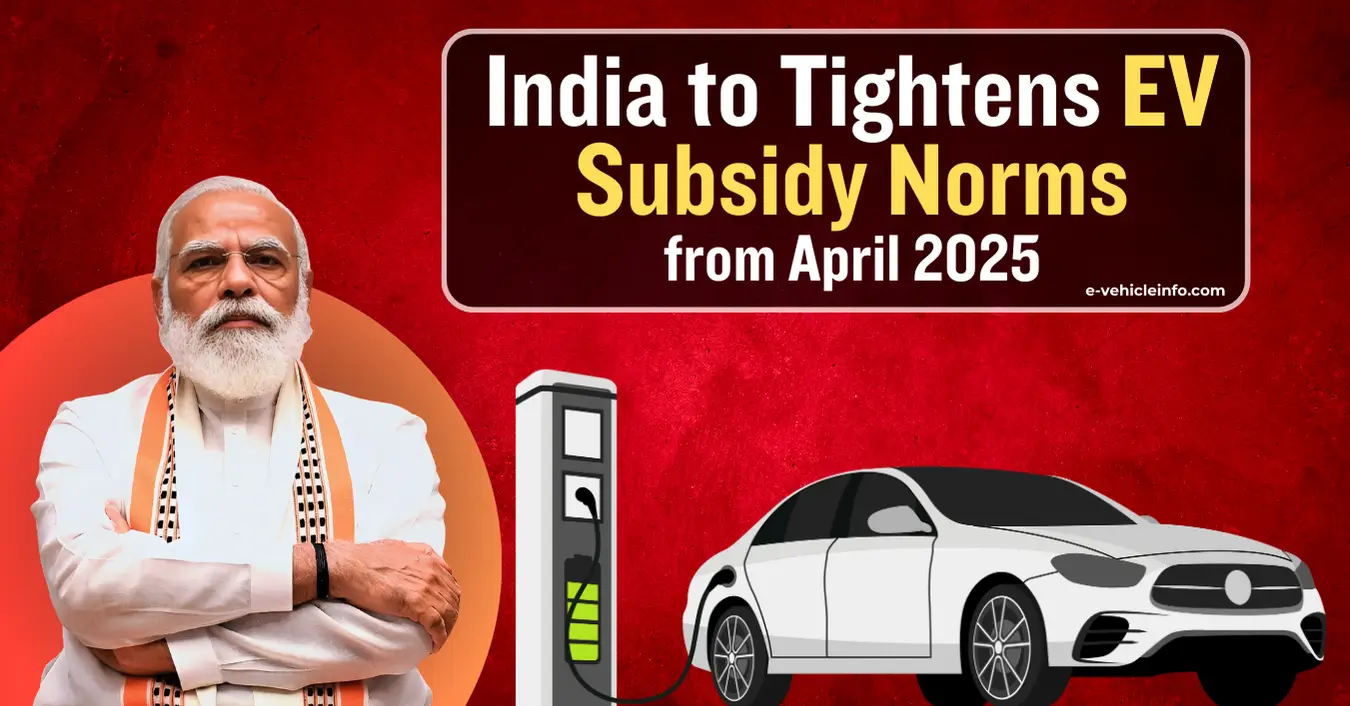
This shift comes under the phased manufacturing program (PMP) of the PM e-DRIVE scheme, aimed at encouraging domestic manufacturing and reducing reliance on imports.
According to a draft seen by LiveMint, the new guidelines will compel OEMs to source and assemble more components locally to qualify for government subsidies.
On the other hand, electric bus manufacturers must adhere to 11 such components, promoting a higher degree of indigenization.
The proposed program tightens the localization criteria compared to its predecessor, the Fame-II scheme, which had looser import flexibility for 18 EV components.
The heavy industries ministry is focused on promoting both faster adoption of EVs and deeper localization. Hanif Qureshi, the ministry’s secretary says,
”We definitely want to promote faster adoption of EVs with the PM e-DRIVE, but the condition is that it must be localized to the maximum extent possible,” heavy industries ministry secretary Hanif Qureshi told Mint.
Qureshi said the government wants to strike a balance in the new PMP. “We don’t want to make PMP too difficult that it cannot be followed, but we also don’t want to make it too easy, which will lead to an increase in imports,” he said, adding that the final rules will be released over the next few weeks after interministerial and industry body discussions”.
The new PMP will introduce restrictions on the import of components not listed in the phased manufacturing program. This measure aims to prevent manufacturers from relying on imported parts for assembly.
Non-PMP components such as tires, suspension systems, and braking systems may also need to be locally produced, further tightening the rules on local sourcing.
While the government seeks to promote maximum localization, some challenges are expected. Indian auto component makers often rely on assembling imported child parts, and the stringent restrictions may present hurdles for compliance.
The industry is expected to raise these concerns during the upcoming stakeholder discussion in October.
The new norms are also designed to address a recurring issue in India’s EV subsidy program false claims by manufacturers seeking incentives.
By tightening localization requirements, the government aims to eliminate loopholes that allowed false subsidy claims under previous schemes.
A key discussion with industry stakeholders is scheduled for October 4, with final rules for the PMP expected by the end of the year. The government will consult industry bodies and other ministries to ensure that the new rules strike a balance between encouraging local production and ensuring the smooth rollout of EVs across India.
India’s push for stricter localization norms under PM e-DRIVE signals a shift toward deeper domestic manufacturing, ensuring the EV ecosystem is robust and sustainable. The success of these new regulations will depend on the industry’s ability to adapt while balancing cost-efficiency and compliance.
This post was last modified on September 30, 2024 2:05 pm
Montra Electric, the clean mobility brand of the Murugappa Group, has unveiled its state-of-the-art electric heavy commercial vehicle (eHCV) manufacturing…
The festive season in India is always considered the right time for new purchases — whether it’s gold, gadgets, or…
Ultraviolette Automotive, the Bengaluru-based electric mobility startup behind the F77, has unveiled its most ambitious motorcycle yet: the X47 Crossover.…
The festive season is always a time of high demand, and Montra Electric is making sure no customer has to…
Mercedes-Benz has officially unveiled the GLC Electric at the IAA Mobility show, a move that electrifies its best-selling SUV while…
Noise, in collaboration with TVS Motor Company, has launched India’s first smartwatch that directly integrates with an electric scooter. The…
This website uses cookies.